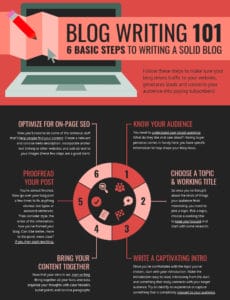How to simplify e-commerce writing for blogs and Amazon product listing in 2022-2023
Many of my customers are new to North America. These brave people have ambitious dreams to settle here to start a business and build a great life. Often, they aspire to be eCommerce entrepreneurs, yet since English is not their native language, writing for e-commerce is difficult.
Writing good content for e-commerce, blogs, Amazon, or Shopify stores is challenging. Even if you are fluent in English, most of us could be better writers. Fortunately, there are new writing tools that facilitate writing. Better yet, we have great new applications with artificial intelligence that can write for you entirely!
This article provides some solutions you can use to simplify writing.
The objective of this article is to:
- Help you convert more sales
- Be found on Google
- Write with credibility to build your brand.
This article will first explore these fantastic new writing tools that automate writing. Afterwards, we will explore the methods to write for the web in the manual and traditional way!
What is the best Software Writing for E-commerce Tools?
Whenever you write an article for the Internet, you need to hit four significant components to write well:
- The article’s structure or outline (the key ideas)
- The written content
- The grammar
- Optimizing written content for the web.
Recently, simple new tools have leveraged Artificial Intelligence (AI) to simplify writing.
BEST IN CLASS tools for eCommerce writing
- SurferSEO– use this software to create your article’s outline.
Use SurferSEO to structure your essay. Give it a topic, and it will intelligently propose to you sub-topics to comprehensively build your article outline. Once you assemble your article, it will tell you how it will likely rank compared to others in the Google search results. The starter SurferSEO package costs about $49 per month to optimize ten articles a month. A free trial is also available to see if this solution is right for you. - Use Jasper.ai to write your article
SurferSEO gives you an article outline. Jasper.ai will write the article for you! If you have already registered your blog, Jasper.ai has the functionality to improve it. If you are blogging to create web traffic, this tool is a critical piece of software to produce more content faster. The starter Jasper.ai costs about $29 per month for 20,000 words a month. This cost is negligible if you want to write better and more quickly every month. - Use Grammarly to catch your spelling errors and improve your sentences
Inevitably, you may want to write some of your content, and you will need a method to verify your spelling and grammar. Grammarly is like Word spellcheck on steroids. It often reviews your sentences and rebuilds them to make them better. I am amazed by how well it does this task. Grammarly works so well that any professional writer will benefit from this tool. Grammarly integrates MS Word and Chrome. There is a free and paid version; the paid version is much better at about $30 per month.
Below is a video demonstrating SurferSEO and Jasper.ai used together to write a blog in just 1 hour!
Why is good writing good for business?
Good content drives good traffic to your website, and good traffic drives sales.
When people visit your e-commerce post and abruptly leave, it signals to Google that your content is irrelevant. The more engaging content you write and the longer people stay on your site, the more Google will recognize you as an authority in your industry. Consequently, Google will refer more traffic to you as you become the information leader in your industry.
Artificial Intelligence automatic writing versus manual writing when writing for e-commerce
Not everyone is ready to trust or spend money to automate writing. Below are some of the dynamics and components Google seeks to evaluate written content.
Know your audience
To reach your target audience, you need to strategize a communication plan that speaks to your target audience; specifically:
- Google and
- Prospective buyers.
Although Google delivers written articles for people, you need to write the Google way to rank well. Alternatively, you must write persuasively to your target demo graphic to drive sales. Both audiences are distinct, and each requires its unique writing style.
Writing for e-commerce 101: Optimize your articles for Google
 Google values an article’s written structure. When it evaluates an article for ranking, it scans for keyword density, headers, legibility, formatting, and other components. Including these parts in your content is Search Engine Optimizing (SEO). Since there is a direct correlation between ranking well in the search results and conversions, it is worth learning much more about writing for search optimization to increase your profits.
Google values an article’s written structure. When it evaluates an article for ranking, it scans for keyword density, headers, legibility, formatting, and other components. Including these parts in your content is Search Engine Optimizing (SEO). Since there is a direct correlation between ranking well in the search results and conversions, it is worth learning much more about writing for search optimization to increase your profits.
Writing for e-commerce 102: Develop a keyword strategy before writing your article
One of the most critical components to include in your articles is the keyword. Keywords are the words your customers use to describe a product or service. If your article frequently contains a particular keyword or synonym, Google will associate and correlate that word with someone’s related search query.
Google is not stupid- do not keyword stuff your articles
It is essential to appreciate that Google’s artificial intelligence is constantly improving. As a general rule, never underestimate Google’s Ai capabilities. If you overuse a specific keyword, Google may interpret that you are keyword stuffing your article. In turn, Google could penalize you in the search results for appearing as spammy.
The target keyword density
As a general rule, try to use your target keywords once or twice for every 100 words.
Where to integrate keywords in your content
Since Google uses the keyword to understand your article, it is a good idea to integrate your keywords in multiple locations when you write. If the platform gives you the opportunity, add the keywords in these locations:
- In the image
Including infographic images and product photos in your article is an effective method to increase the engagement of the content you write. When you upload a photo in your articles, a field usually allows you to describe the picture; use it! You can embed your keyword into the product photographs via an ALT-Text tag. Describe the product, include a keyword, and vary the description for other pictures. Try not to exceed 150 characters when writing an Alt Text Tag. - H1 H2 H3 Headers
You can insert keywords in the headers; however, use the header tags appropriately. Use only one H1 header to convey the subject at the top of your article. Use the H2, H3 and H4 header tags to communicate subtopics. The header tags should be only 20-70 characters. - Meta Description and Page Titles
Use these fields to communicate the article’s subject to search engines. If you do not include your target keywords in these fields, the search engines may not deem your content relevant to your audience’s search. Page titles should be about 30 to 60 characters. Meta Description should not exceed 155-160 words. - The Body
How much should you write when you write blogs about your product or service? The more words in your blog, the better they do. You can have as few as 300 words, but blogs with 2500 words tend to rank best. If you are writing an Amazon listing, try not to exceed 250 words.
Tools to research keywords
Depending on where and how you write, you can use various tools to research or learn how to apply your keywords.
- Yoast
Yoast is a WordPress plugin. It outlines all legibility, format or keywords issues and gives you a clear roadmap to fix any problem. I always use it for any page I write. - Ahref
Ahref is an online tool to research keywords. Use this website to discover trending words and how competitive it is to rank well for these keywords
If writing for eCommerce seems too complicated, there are solutions
For some people, optimizing written content for Google is too complicated. To simplify the writing process, it’s often easier to use SurferSEO and Jasper.ai to do the writing for you. You can set Jasper.ai to include your target keywords following the best SEO practices. Because over or underusing a given keyword can adversely affect your Google rank, using Jasper.ai simplifies the task of gathering ideas, structuring thoughts, and applying correct grammar.
You can hire a writer, especially if you dislike using AI to write your content. Sites such as Fiver, problogger.com, and Upwork are places that promote freelance and professional blog writers. There, you can engage various classes of authors and ask to see their portfolios. When you make your hire, make sure that they understand SEO. You want them to give you appropriate written content pre-optimized for search engines.
What to include in your blogs when writing for e-commerce?
- The Short Description
This description describes the product in 150 words or less. Customers can click an expand to read the long description if they want more information. - The Review and Star Ratings
Credibility is everything. Customers want to purchase from a trusted source. Include customer testimonials, and your sales will thrive. - Stock Availability
Manage the stock availability from the onset. - The Service or Product’s options
(colour, size, options) - Best Sellers
If your customers know that a particular product is popular, they will most likely gravitate to it.
Like a product photograph, the e-commerce article, listing or blog is a tool a customer uses to make a buying decision. Pack helpful information in that article and people you will draw in an engaged audience.
Videos complement articles written for e-commerce
Complementing your e-commerce article with video is a powerful method to improve your visitor experience. Consequently, it will also help your rank with Google, which could drive sales. A video can be a product demonstration, a testimonial, or anything to enhance conversions. You can use the video to present and reiterate the written text, so the viewer doesn’t need to read anything. Video production is effortless these days. With a bit of creativity, you can produce a very professional video with just a smartphone.
To improve your video content, you can use www.invideo.io. There you can find templates and stock footage to produce unique animated content.
Conclusion
Good content will drive business to your eCommerce page. But you cannot cheapen the process. It takes time to write well. If you don’t have time, you can use many software solutions to write the content you can use it to help you write better.
If you plan to write e-commerce content, learn the syntax Google wants. Write engaging content for your audience, and Google will refer more traffic to your page.
If you liked this article, visit this blog:
E-Commerce Photography: How to Make Product Photos Stand Out

